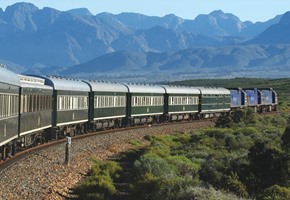
The Pride of Africa
10/02/2015 · By Sukie Chapman
All great rail holidays must feature elements of luxury, refinement and tradition. The Pride of Africa has all of this and more.
Read moreAbout the tour
Discover the highlights of Namibia and South Africa on this fantastic holiday by rail. Explore Cape Town and Table Mountain, see the 'big five' in Etosha National Park, experience the mighty Sossusvlei and enjoy six indulgent nights on the incredible Pride of Africa - the world's most lavish and luxurious hotel train.